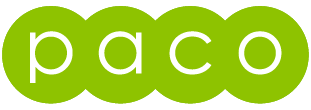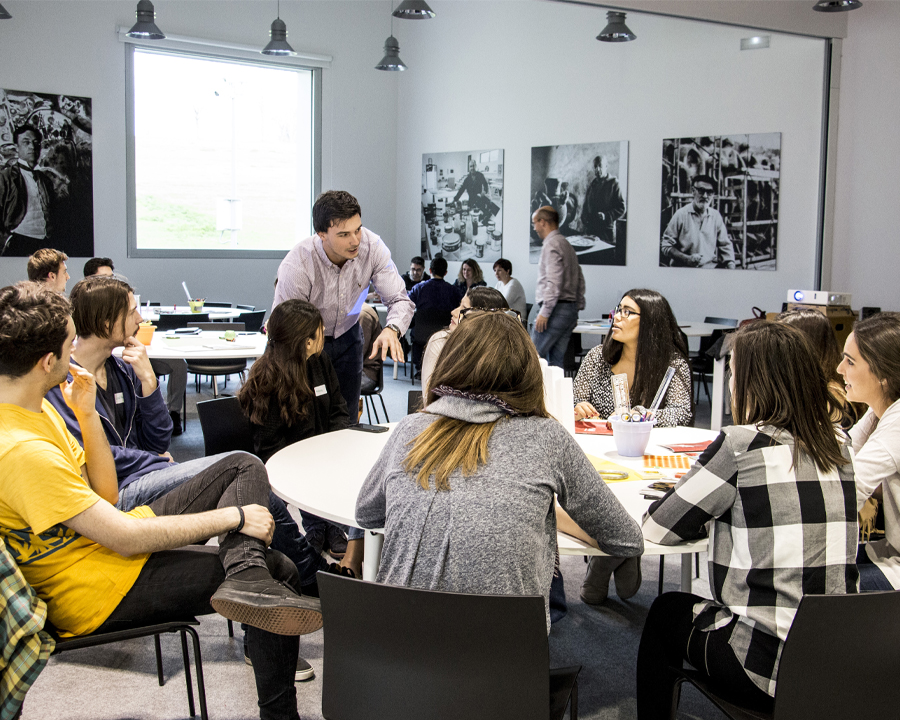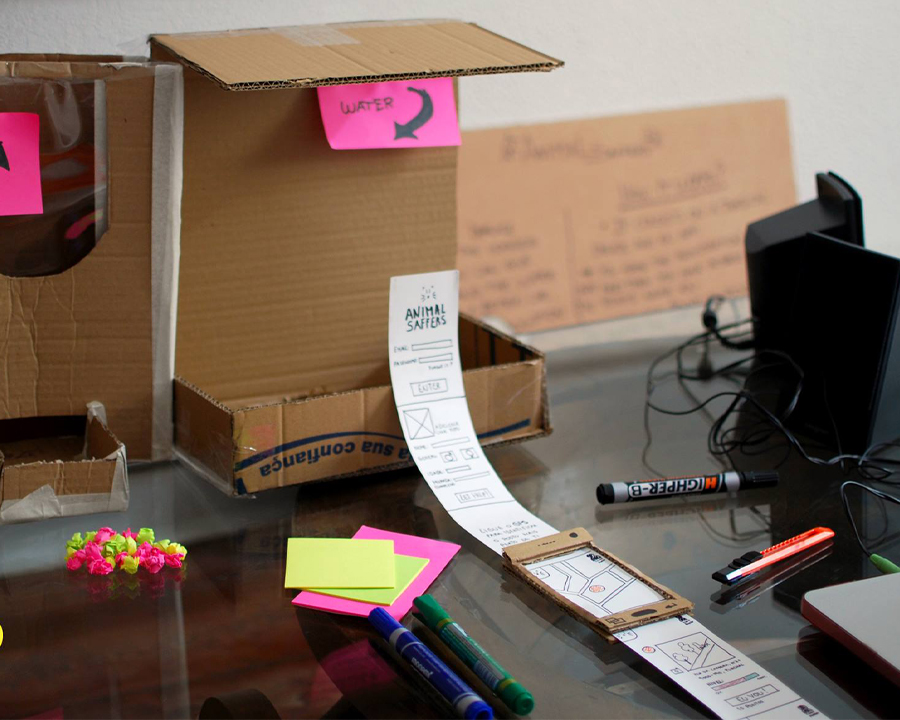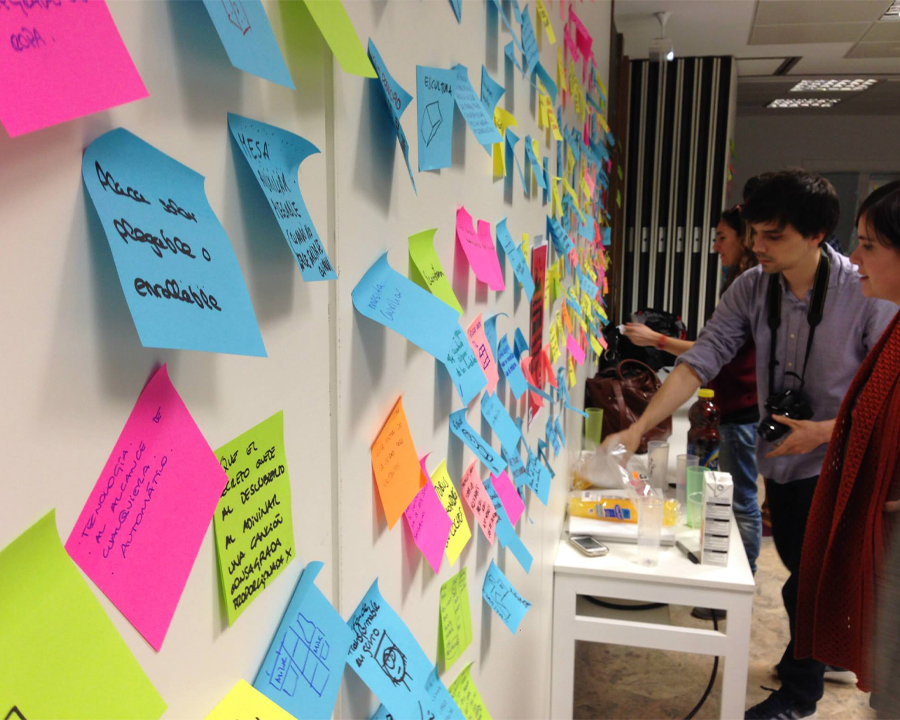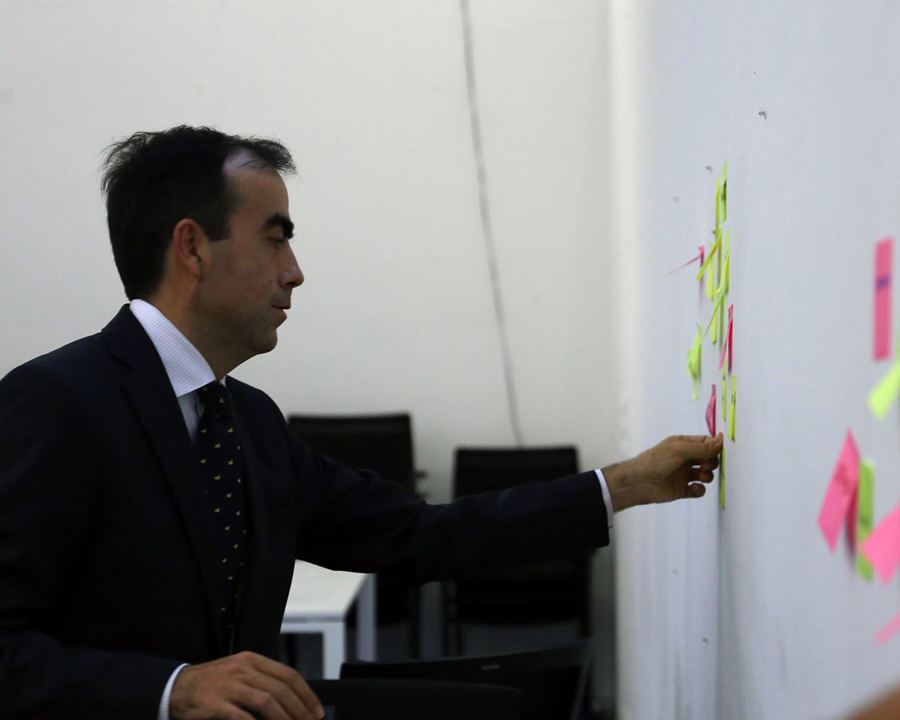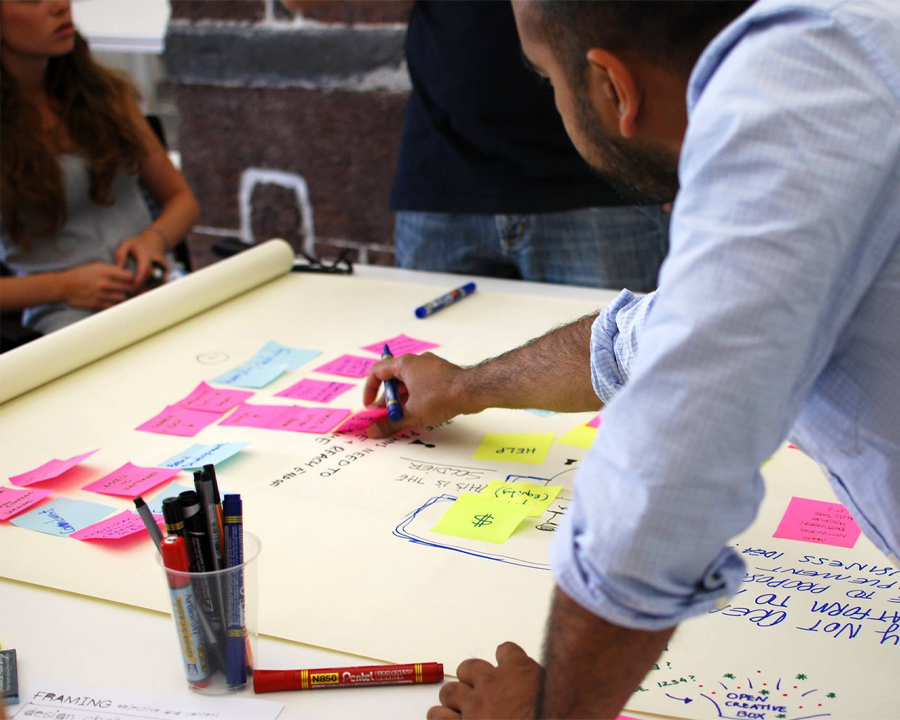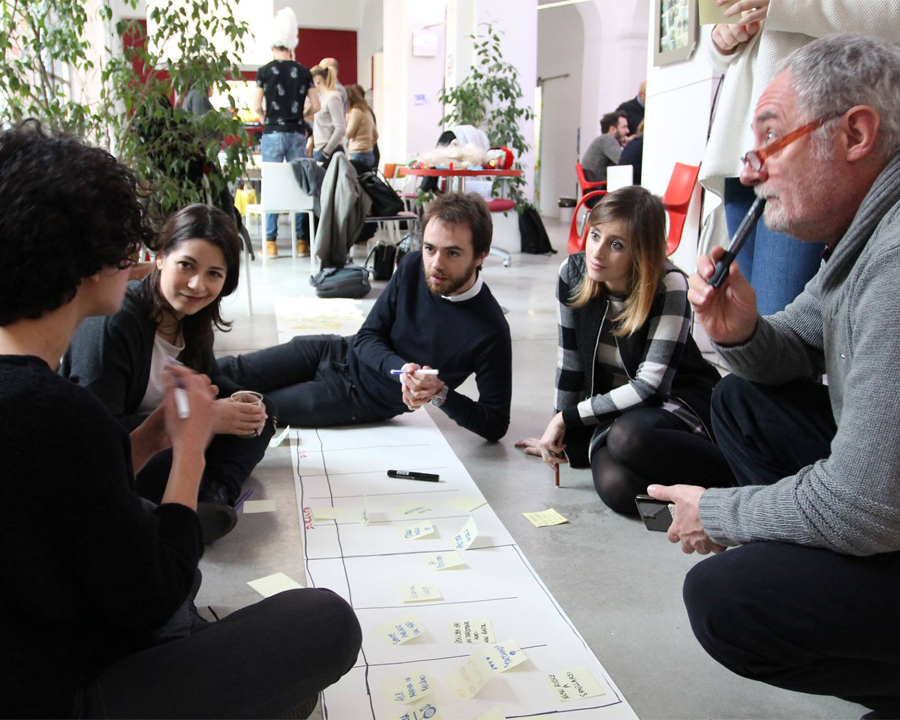Project Description
Design Sessions for companies
Our design sessions use different methodologies and in particular, Design Thinking theories and Service Design methods. They are very productive initiatives that involve people in an energetic, engaging and fun process. Organized according to a well-structured process and with time limits, the participants are always followed by the facilitation team, are helped to ‘think with their hands’ and not to get lost in unproductive discussions, prototyping ideas together through the use of materials and techniques of representation.
As the co-organizer for over 7 years of global Jam-based service design events involving thousands of people at different locations around the world, PACO is an international expert in Jam practice sessions applied to Design Thinking and Service Design. PACO uses them in particular in business processes to define the company’s sustainability goals and transform processes and strategies. In these years we have carried out many design sessions in different sectors. We have worked with (ENI, SIEMENS, EON, ….)
Design sessions can be implemented at various times and for different goals:
Processes for developing innovative ideas.
A design session can be used for the development of a sustainable innovation project for products, services, strategies or business plans. An organized and focused session can generate many ideas in a short period of time (some of which are certainly innovative) while at the same time bringing them to a good level of development through prototyping, that can then allow for further stages of implementation.
Growth of innovation and collaboration culture within the company.
Training programs that use design sessions can raise awareness and activate in a company the principles behind open innovation processes based on collaboration and inclusion. Innovation today is no longer limited to one sector and a few people within a company, but has become an open process that must aim at implementing the relational capital of the company by involving all people. These sessions also bring cultural change in the company through an energetic, fun and collaborative process, fostering relationships between people, through the inclusion of all and the motivations of the group and individuals. They can be used for specific training programmes on specific topics inside or outside the company, for example (customer experience, communication, etc.).
Development and identification of corporate assets and strategies
Programs based on design techniques are used for the pursuit of sustainable innovation in corporate processes and values. With these processes, the main constituent elements of the change process for sustainable innovation and the company’s objectives are identified and defined through a collaborative process and a definition of strategies that can, in turn, be implemented into the objectives.
Reference Community involvement activities (The Company’s role).
Design sessions and other side events are used to activate and improve relations with reference communities inside and outside the company. Involvement and relations with people and the territory in which they operate are fundamental elements in a strategy of sustainable and collaborative innovation. Recent research has demonstrated the importance of the ability for companies to be cohesive with their communities of reference and the positive aspects of business and its sustainability.
ENI
The Six-Legged Hack explores the potential of frameworks and innovative service design tools to develop awareness, promote participation and stimulate active collaboration between different business functions, conceptual approaches and individual backgrounds, to ensure the company is overseeing every development opportunity and innovation.
The Six-Legged Hack is a co-creation workshop program designed and developed with the aim of engaging and involving employees from the most diverse backgrounds and expertise in the participatory development of services inspired by the principles and values of a circular economy. The workshops will be held in 10 different locations in Italy, Europe, Africa, America, Asia; which means a careful planning phase is required.
SIEMENS
The workshop was designed to stimulate the interest on subjects such as Science, Technology, Engineering and Mathematics, for young girls that offer different job opportunities but which until today are predominantly masculine. 40 girls, prospective ‘future engineers’, received an elephant and a sheet of paper in which they were required to come up with a solution to transport the elephant from one part of a valley to another without dropping it. The girls were separated in groups and with the support of some facilitators or scientists, engineers, math specialists, they were followed during an elaboration and execution of a solution. The groups worked using a Design Thinking Methodology: starting from the analysis of a physics and engineering challenge, the kids formulated questions, collected information, elaborated hypotheses and developed their solution, to the point where they were able to present it to the public.
